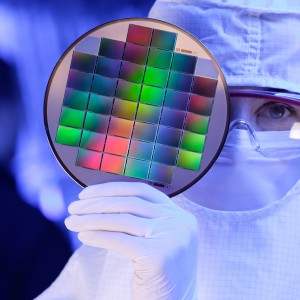 Sony said Friday it will invest US$1 billion to increase its production capacity for the image sensors used in digital cameras, eyeing the booming market for smartphones, tablets and other camera-equipped gadgets.
Sony said Friday it will invest US$1 billion to increase its production capacity for the image sensors used in digital cameras, eyeing the booming market for smartphones, tablets and other camera-equipped gadgets.
The Tokyo-based electronics maker said it will increase its maximum production of sensors at a main factory in Nagasaki, located on Japan’s southern island of Kyushu. The investment will increase the company’s production capacity to 60,000 wafers per month from the current 45,000, based on calculations for a 300 millimeter wafer size. The number of sensors per wafer can vary with the type of sensor being produced. The newest investment will be in CMOS sensors, though Sony will continue to make its CCD sensors as well.
Coming off a record US$5.7 billion loss last fiscal year, incoming CEO Kazuo Hirai has stated that imaging technology will be a major focus for the company, even as it cuts back on in-house production of TV panels and other components. The booming market for smartphones and tablets, for which high-resolution cameras are now standard, represent a strong opportunity for Sony to profit even off of its rivals’ successes.
While Sony has its own Cyber-shot and Alpha camera lines, along with phones, tablets and game consoles with built-in imaging, it sells around 80% of its image sensors outside of the company, and says it is the world’s leading producer of both CCD and CMOS sensors. Teardown reports have shown its camera modules are used in the iPhone and other leading devices, and Sony is also increasingly looking to use its imaging prowess in areas outside of consumer electronics, such as medical tools.
Sony will invest ¥80 billion in the upgrade, of which ¥45 billion will be booked during the current fiscal year through March 2013. This makes up of half of Sony’s stated total investment in semiconductors for the current period. The total investment is to be completed by September of 2013.
Both types of sensors serve the same role of converting light into digital signals, but CCD sensors have traditionally been used in higher-quality cameras for their better image quality, while CMOS are cheaper to manufacture and use less power. CMOS technology is maturing and increasingly used in high-end cameras as well as cheaper pocket models and gadgets.





